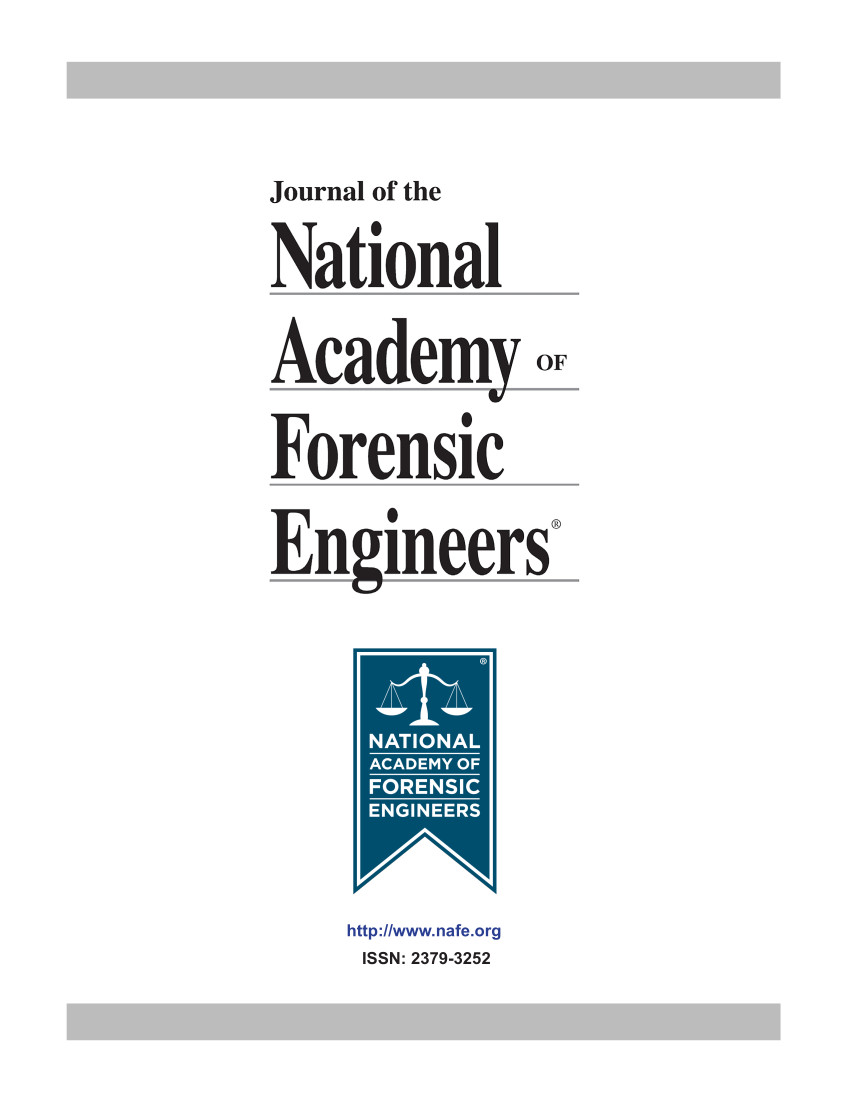Forensic Engineering Analysisf A Truck Accident
DOI:
https://doi.org/10.51501/jotnafe.v28i1.742Keywords:
Accident reconstruction, truckAbstract
Forensic Engineering Analyses Of Collision Events Often Focus On Physics Models And Calculation Methods Governing The Forces Occurring During An Impact And After The Separation Of The Vehicles. However, Physics Models And Calculation Methods Governing The Motion Of Vehicles In Normal Linearnd Rotational Dynamics, Outside Of The Impact Phase, Can Be Applied To A Forensic Engineering Analysis To Gain Insight Into The Collision Events. Techniques From The Fields Of Automotive Engineering And Highway Engineering, When Applied By The Forensic Engineer, Can Answer Critical Questions About Aarticular Case, Or May Be Able To Eliminate Hypothetical Scenarios Proposed By Others. He Mechanical Systems And Dynamics Of Commercial Vehicles, Especially Articulated Vehicles, Differreatly From The Dynamics Of Typical Utomobiles. The Limitations And Performance Capabilities Ofommercial Vehicles In Acceleration, Lateral Motion, Rotational Yaw, Roll And Pitch, And Handling Characteristicsan Be Used To Analyze Events Leading Up To A Collision Or To Evaluate Avoidance Capabilities. Annderstanding Of Factors Such As Articulation, High Enters Of Gravity, Rollover Propensity, Off-Tracking Inurns, Jack-Knifes, Trailer Swingouts, Acceleration Rates, And Lane Change Performance Is Essential In Thenvestigation And Reconstruction Of Commercial Vehicle Collisions. This Paper Will Provide An Introductiono Vehicle Dynamics Concepts Applicable To Commercial Vehicle Collisions, With A Combination Ofcientific Theories That Are Unique To Heavy Vehicles.Published
2011-01-01
How to Cite
Melcher, Daniel J. 2011. “Forensic Engineering Analysisf A Truck Accident”. Journal of the National Academy of Forensic Engineers 28 (1). https://doi.org/10.51501/jotnafe.v28i1.742.
Issue
Section
Articles
License
Copyright (c) 2011 National Academy of Forensic Engineers

This work is licensed under a Creative Commons Attribution-NoDerivatives 4.0 International License.
All rights © Journal of the National Academy of Forensic Engineers.
Full statement regarding the author's license of copyright to the NAFE is shown on the Copyright section of the Submissions Page.






